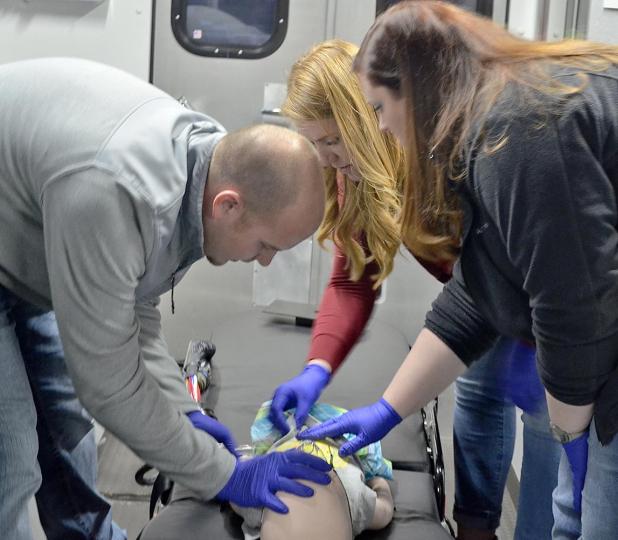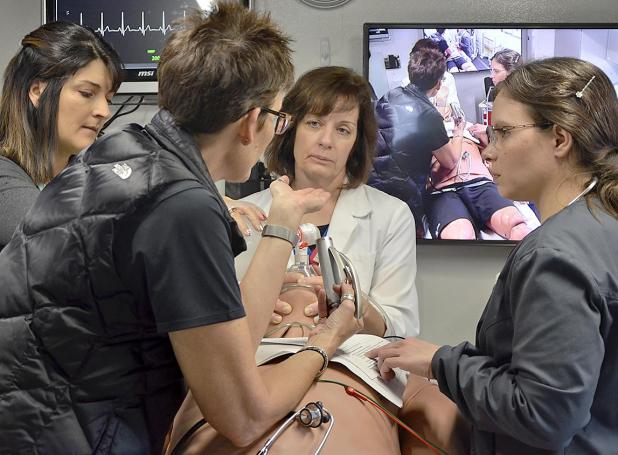
EMTs with Imperial EMS work on a sick baby with symptoms including dehydration, vomiting and diarrhea as a scenario. Pictured from left are Chad Ostmeyer, Marcie Kelley and Courtney Burke. Their training session took place in the ambulance module area. (Johnson Publications photo)

This training session was in the emergency room module area of the SIM-NE mobile simulation lab. Instructor Dee Vogel, back to camera, is going over information with the trainees, from left, Chase County Hospital RNs Shannon Kuhlmann, Director of Nursing Kathy Geier and Ann VanLieu. (Johnson Publications photo)
Special simulator trains emergency personnel
SIM-NE (Simulation in Motion Nebraska) uses high-tech simulation trucks to provide training opportunities on life-saving procedures for rural emergency medical providers and hospitals.
The simulation labs are 44-foot trucks with two simulation spaces—an emergency room module and an ambulance module with a manned control center in between.
The SIM-NE team from Scottsbluff provided training sessions for 20 Chase County EMS volunteers last Thursday and approximately 20 Chase County Hospital medical personnel on Friday.
Each simulation vehicle houses human patient simulators and supplies to recreate emergency settings as close to reality as possible. The SIM-NE teams have many different patient scenarios to choose from for training purposes.
The University of Nebraska Medical Center (UNMC) coordinates four mobile simulation truck labs based in Norfolk, Lincoln, Kearney and Scottsbluff where they can travel to rural communities for training.
Each mobile lab is staffed by licensed healthcare professionals and educators to provide a realistic and safe learning environment.
The simulation instructors from Scottsbluff were Micki Votruba and Dee Vogel. As well as being SIM-NE instructors, they are both experienced flight nurses.
The control center allows the instructors to regulate and adjust high fidelity patient simulators that include adults, children, infants, pregnant mothers and newborns.
The simulators can talk, breathe, react to medication and bleed. They have a pulse and their eyes move. The simulated patient’s condition changes according to the treatment it receives, said Votruba.
“There’s even a simulated pregnant woman who gives birth,” Votruba added.
To view more please log in or subscribe to the digital edition. https://etypeservices.com/Imperial%20RepublicanID359/
